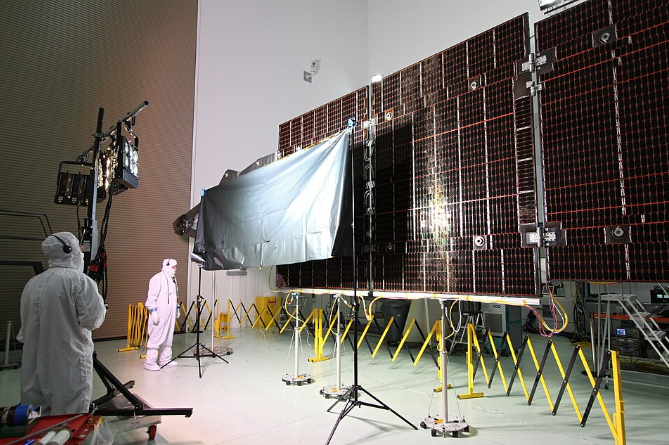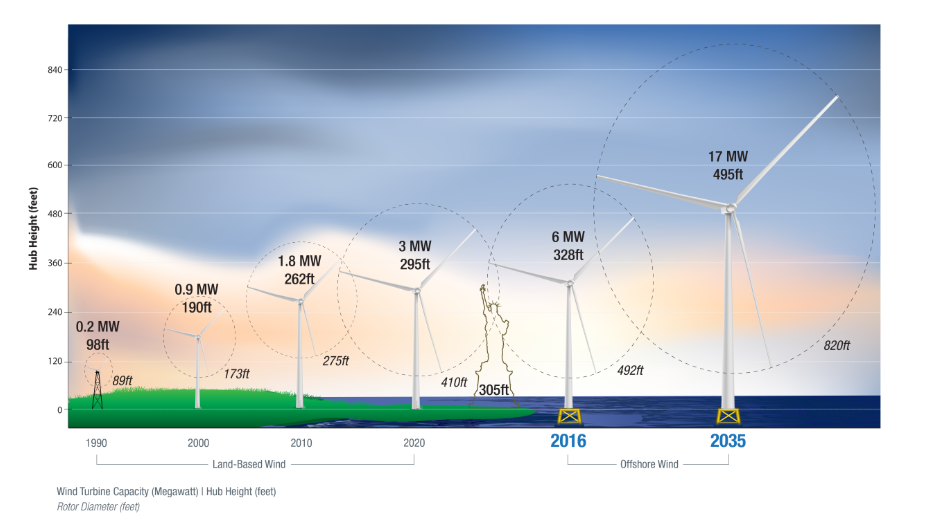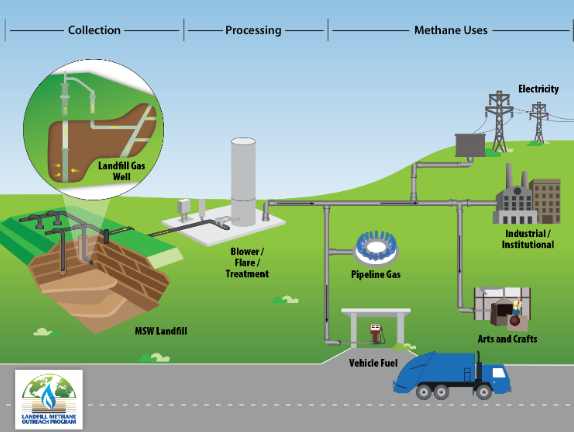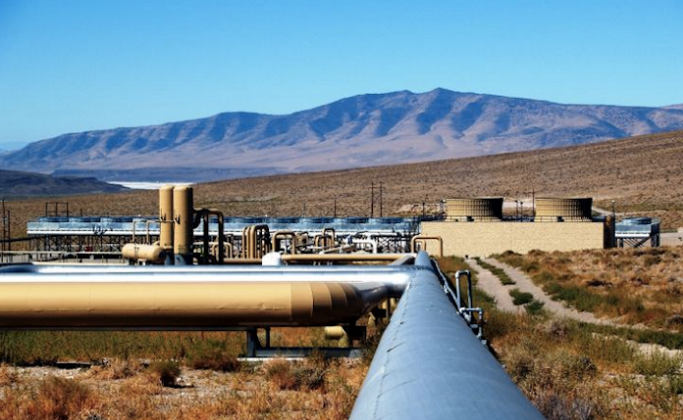
By Lilly Price – 4/30/25
Innovations Powering a Brighter Future: The Latest Advancements in Renewable Energy
Thank you for celebrating Earth Month with us! As April comes to a close, we are looking ahead to what’s next in clean energy. Positive advancements in the renewable energy sector can sometimes fly under the radar, especially with rapid changes in technology and policy where shifting regulations can slow adoption or obscure progress. The innovations discussed below are not only promising; they are quickly becoming a reality.
Breaking Efficiency Barriers in Solar
Solar remains a fundamental component of the renewable energy transition, but crystalline silicon, the primary material used in nearly all solar panels, has a limited efficiency of around 20% in converting sunlight to electricity, a figure that hasn’t significantly improved since the 1990s. A new class of materials known as perovskites may improve solar efficiency. Perovskites’ unique crystal structure allows them to absorb sunlight with exceptional efficiency: when layered with silicon, they have the potential to reach efficiencies as high as 43%, the fastest a semiconductor has advanced in history.
This leap in efficiency could dramatically reduce the land required for solar installations and lower the overall cost per watt of energy produced, making solar power even more competitive with fossil fuels. Additionally, perovskites can be printed onto flexible, inexpensive plastics, expanding their potential for widespread use and scalability.

Several labs in the U.S. and companies worldwide are investing in testing and developing perovskite solar technologies. One company developed a new formula combining perovskites with traditional silicon to increase conversion efficiency by 16% and decrease solar power costs by 10%. This “hybrid” approach presents a promising near-term strategy to boost the performance of widely used silicon-based technology in the U.S. market.
The National Renewable Energy Laboratory (NREL), a division of the U.S. Department of Energy, assembled a consortium of perovskite solar stakeholders like the company above to accelerate developments in this rapidly advancing field and share testing results. So far, the outcomes are encouraging, bringing this innovative technology closer to widespread commercial deployment.
Beyond improving efficiency, researchers at the NREL are also working to make solar panels more sustainable throughout their entire lifecycle. In a recent proof-of-concept study, researchers demonstrated that using femtosecond lasers to create glass-to-glass welds in solar modules could significantly simplify the recycling process at the end of a panel’s useful life. As solar deployment expands across the country, developing efficient and environmentally responsible recycling methods is essential to support a circular solar economy.
Wind Energy: Bigger and Better
Wind energy continues to be a cornerstone of America’s clean energy portfolio, accounting for 45.6% of the renewable supply in 2022. One key trend is the shift toward larger, more efficient turbines, with tower heights increasing by 83% since the late 1990s and blades becoming significantly longer.

Larger turbines can capture more wind energy, especially at higher altitudes where winds are stronger and more consistent, and because turbine size and output scale nonlinearly, there exists a strong incentive to keep going bigger. According to the NREL, advancements like longer blades, low-specific-power turbines, improved tower manufacturing, climbing cranes, and wake steering could unlock up to 80% more economically viable wind energy capacity across the contiguous United States.
While in its early stages, U.S. offshore wind offers several advantages, including more consistent wind speeds, easier turbine transport, and less pressing conservation concerns. As of March 2025, the U.S. had 174 MW of installed offshore wind capacity, with major projects like Vineyard Wind and South Fork Wind expected to come online soon. For perspective, China—the global leader in renewable energy—has more than 200 times America’s installed offshore wind capacity and recently unveiled record-breaking 26-MW offshore turbines. Just seven of these new turbines would match the entire installed offshore wind capacity of the United States.

Building a robust domestic offshore wind energy supply chain presents several challenges, including limited infrastructure for manufacturing components, port capacity, and access to specialized vessels. Recognizing the vast potential of wind resources in deeper waters off of U.S. coasts, the Department of Energy has launched the Floating Offshore Wind Shot™ initiative to reduce the cost of floating offshore wind energy by more than 70% by 2035, a critical step toward unlocking wind potential in areas too deep for traditional fixed-bottom turbines.
Turning Waste into Clean Energy
Renewable natural gas (RNG) offers a compelling path to clean energy while making use of the existing gas infrastructure. RNG is biogas that has been refined to meet pipeline-quality standards, allowing it to serve as a direct substitute for fossil natural gas. This biogas originates from various organic waste sources, including municipal solid waste landfills, wastewater treatment plants, livestock farms, and food waste. The Energy Co-op is proud to be southeastern Pennsylvania’s only supplier of RNG, which we source from landfills. Our RNG offers a renewable option to meet our members’ gas needs while helping reduce potent greenhouse gas emissions into the atmosphere that would otherwise be released through fracking and flaring.

The Southeastern Chester County Refuse Authority (SECCRA) landfill project is a prime example of RNG in action. In partnership with a renewable technology company, SECCRA has implemented a vacuum system that purifies landfill methane and injects it directly into the gas grid without combustion. While The Energy Co-op currently sources renewable energy credits for gas from landfills across the country, renewable natural gas may soon become widespread enough to source it right here in southeastern Pennsylvania.
The efficiency and scalability of renewable natural gas (RNG) production are steadily improving, driven by ongoing technological innovation. Advances in anaerobic digestion systems, which convert organic matter into biogas, along with more efficient gas upgrading and pipeline injection technologies, are enhancing the commercial viability of RNG. Emerging solutions, such as integrating carbon capture to purify or reuse CO₂ and deploying power-to-gas hybrids that convert surplus renewable electricity into hydrogen for synthetic methane production, further boost the sustainability and output of RNG systems.
Emerging Frontiers: Advanced Geothermal & Hydrogen
While not technically a new development, geothermal energy has not been widely available until recently. Enhanced Geothermal Systems (EGS) could overcome the geographic limitations of traditional geothermal resources by tapping into deep heat stores almost anywhere on Earth.
EGS works by creating artificial reservoirs: water is injected into hot, dry rock deep underground, where it circulates through fractures and returns to the surface as heat. Recent advances suggest this approach is becoming more practical and cost-effective. According to the Clean Air Task Force, tapping just 1% of the U.S.’s EGS potential could generate enough steady, flexible power to meet nearly four times the country’s current electricity demand. Critics note that EGS involves some of the same concerns as fracking, including seismicity, heavy water use, and potential contamination. Supporters maintain that no fossil fuels are involved, and modern monitoring tools can better manage these risks than earlier efforts could.

Hydrogen, produced via several processes including the use of electricity to split water, holds significant promise for hard-to-electrify sectors, such as heavy industry and transportation, thanks to its high burn rate and exceptional energy density by weight. Recent breakthroughs are making hydrogen production more efficient and sustainable. In the U.S., several programs have already outfitted buses, commercial ferries, and trains with zero-emission hydrogen fuel cells. However, for the use of hydrogen fuels to be truly clean, its production must be powered with clean energy.
Researchers at the University of Oxford are undertaking an interesting approach to green hydrogen production and have bioengineered bacteria to act as “hydrogen nanoreactors” that can produce hydrogen using sunlight. This method could offer a cost-effective and zero-carbon path for hydrogen production, potentially bypassing the need for expensive metals and electricity used in traditional water electrolysis methods.
Similarly, scientists at the University of Illinois Chicago have developed a new method to produce hydrogen using biochar, a carbon-rich substance derived from agricultural waste, along with solar power. This method requires 600% less energy than traditional water electrolysis, offering a sustainable way to produce hydrogen while utilizing waste products and creating a new revenue stream for farmers.
AI Uses in Grid Management and Demand Response
One of the most promising developments in the renewable energy sector does not pertain to energy generation itself but in how we manage and integrate renewable resources into our power grid.
Our grid faces myriad challenges which lead to higher prices for consumers and leave us vulnerable to extreme weather, security threats, and infrastructure failures. We need a more connected and resilient grid to handle increasing demand, network complexity due to renewables integration, and weather volatility.
The transition to renewable energy presents grid challenges due to the natural variability of these sources. Artificial intelligence (AI) is becoming a useful tool to improve the efficiency and reliability of renewable energy systems. AI can integrate and analyze vast amounts of data, including localized weather patterns, historical production data, and satellite imagery to predict the energy output of solar and wind farms with greater accuracy than traditional methods.
AI can also help improve overall grid management and stability as renewable energy use grows. By using AI to analyze real-time data from sensors and smart meters across the grid and by comparing it to historical data and offline planning models, operators can better spot potential instabilities, anticipate demand patterns, and optimize electricity flow. This allows for better integration of distributed energy resources like rooftop solar and community microgrids, making our grid more resilient and carbon-reduced.
These AI applications are especially important for regions like ours (PJM) that face capacity constraints and a growing backlog of renewable energy projects waiting for interconnection. By improving the balance between supply and demand sides of the capacity equation and speeding up the modeling and vetting of renewable projects, AI can help address some of the challenges in transitioning to a renewable-dominant grid.
People Power
Faced with rising energy demand and a clear shift in consumer sentiment towards cleaner energy sources, the market is responding with increased investment in renewable energy technologies. This transformation is not just the result of decisions made in laboratories or political offices; it is being driven by the collective actions of individuals across Pennsylvania and nationwide. As more households and businesses choose renewable energy, they send clear signals to the market, prompting greater investment in clean energy technology deployment.
Grassroots movements and community initiatives that promote renewable energy adoption at local and national levels further amplify the power of everyday people. A persistent coalition of clean energy advocates recently pushed legislators in Harrisburg to advance community solar legislation, such as the newly introduced HB 1155. This multi-year campaign, fueled by citizens eager for access to solar savings, demonstrates how grassroots demand can translate into concrete policy action. Similarly, Governor Shapiro’s proposed “Lightning Plan,” introduced to the General Assembly last week, seeks to update energy standards and streamline clean energy project approvals here in the Commonwealth. This legislation reflects the growing strength of coalitions of environmental advocates, community groups, and consumers calling for faster progress on clean energy and climate action.
Beyond organized advocacy, individual choices continue to create market momentum for clean energy. Pennsylvania recently celebrated reaching 1 gigawatt of installed solar capacity (enough to power a city the size of Pittsburgh!) thanks largely to homeowners and businesses investing in rooftop solar. The state is also witnessing a surge in cleaner transportation, with electric vehicle registrations surpassing 70,000, reflecting a dramatic shift in consumer preferences. A recent poll found that 78% of Pennsylvania voters support increasing the use of clean energy across the state. These trends send a clear message: Pennsylvanians are not only demanding cleaner energy but are actively building a sustainable future from the ground up.